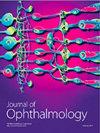眼后部房水流动紊乱在视神经损伤发展机制中的作用(文献综述)
IF 1.8
4区 医学
Q3 OPHTHALMOLOGY
引用次数: 0
摘要
本研究在文献检索的基础上发现,相对于眼球前部,对眼球后部液体循环的特殊性研究不足。这表明视网膜和视神经有自己的清洁系统,它们独立或与大脑的清洁系统相互作用。有趣的是关于眼睛淋巴系统的理论,它的功能可能类似于大脑的淋巴系统,有四个部分,并确保眼内、颅内和间质液体之间的交换以及眼后部代谢废物的清除。目的。根据文献资料确定视神经损伤发展机制中眼后部液体循环障碍。方法:文献检索48篇文献。重要的是要明白,视神经在正常情况下将大量液体从眼睛输送到大脑,反之亦然。血流灌注的平衡(在病理情况下可能是再灌注)是由网层、神经不同部位蛛网膜下腔的位置以及支持它们的AQP4通道保证的。问题是视神经是否有自己独立的淋巴系统,或者它是否与大脑的淋巴系统相互作用。眼内液、视网膜和脑间质液以及视神经中的脑脊液的循环如何与血液以及与大气压波动协调仍不清楚。尽管这一理论尚未得到认可,但仍有许多支持者将视神经损伤解释为液体循环紊乱的结果。液体流动的减慢,以及轴突运输的减慢,可以认为是神经病变转变为视神经萎缩的时刻。这就是为什么在研究视神经疾病时,研究眼睛后部液体流动和交换的特性是很重要的,而纠正这种循环障碍可以用于治疗目的。结论。眼后部液体循环受损可发生在视神经损伤机制中。通过评估流体力学,提高诊断能力将有助于了解单个组件的作用,而它们的纠正可能有助于视神经的恢复。本文章由计算机程序翻译,如有差异,请以英文原文为准。
Disorders of aqueous humor flow in the posterior part of the eye in the mechanisms of optic nerve damage development (literature review)
The study based on the literature search revealed that the peculiarities of fluid circulation in the posterior part of the eye have been studied insufficiently compared to the anterior part. It is suggested that the retina and optic nerve have their own cleansing system, which functions independently or in interaction with the brain's cleansing system. Of interest is the theory of the glymphatic system of the eye, which probably functions similarly to the glymphatic system of the brain, has four segments and ensures the exchange between intraocular, intracranial and interstitial fluids and the removal of metabolic waste products in the posterior part of the eye. Purpose. To determine the disorders of fluid circulation in the posterior part of the eye in the mechanisms of optic nerve damage development according to the literature. Methods: literature search of 48 sources. It is important to understand that the optic nerve under normal conditions passes a large amount of fluid from the eye to the brain and vice versa. The balance of perfusion (and, presumably, reperfusion in case of pathology) is ensured by the lamina cribrosa, the location of subarachnoid spaces in different parts of the nerve, and the AQP4 channels that support them. The question is whether the optic nerve has its own separate glymphatic system, or whether it interacts with the glymphatic system of the brain. It also remains unclear how the circulation of intraocular fluid, interstitial fluid of the retina and brain, and cerebrospinal fluid in the optic nerve is coordinated with blood, as well as with fluctuations in atmospheric pressure. Although this theory has not yet been recognized, it nevertheless has many supporters who explain optic nerve damage as a result of fluid circulation disturbances. The slowing of fluid flow, as well as the slowing of axonal transport, can be considered as the moment when neuropathy transforms into optic atrophy. That is why the study of the peculiarities of fluid flow and exchange in the posterior part of the eye is important when studying diseases of the optic nerve, whereas the correction of such circulation disorders could be used for therapeutic purposes. Conclusion. Impaired fluid circulation in the posterior part of the eye can occur in mechanisms of optic nerve damage. Improved diagnostics with the ability to assess hydrodynamics will help to understand the role of individual components, while their correction will likely contribute to the optic nerve recovery.
求助全文
通过发布文献求助,成功后即可免费获取论文全文。
去求助
来源期刊

Journal of Ophthalmology
MEDICINE, RESEARCH & EXPERIMENTAL-OPHTHALMOLOGY
CiteScore
4.30
自引率
5.30%
发文量
194
审稿时长
6-12 weeks
期刊介绍:
Journal of Ophthalmology is a peer-reviewed, Open Access journal that publishes original research articles, review articles, and clinical studies related to the anatomy, physiology and diseases of the eye. Submissions should focus on new diagnostic and surgical techniques, instrument and therapy updates, as well as clinical trials and research findings.
 求助内容:
求助内容: 应助结果提醒方式:
应助结果提醒方式:


